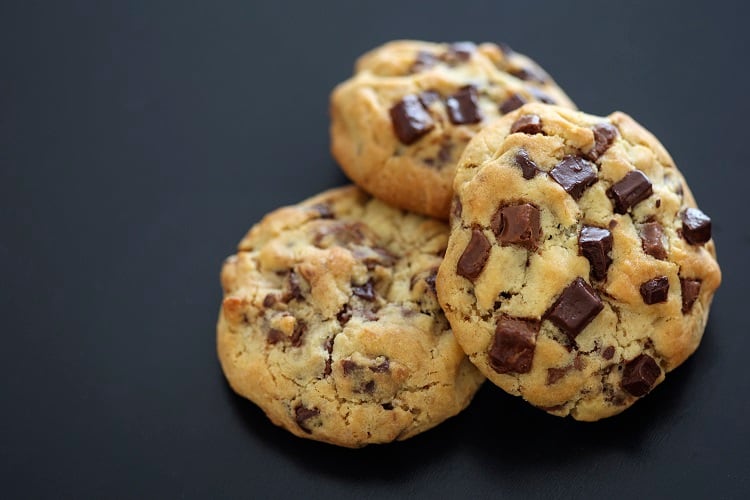Ensuring food is safe to eat can be challenging. The food industry must often juggle the very real need to keep its consumers safe, by providing accurate information to them as to when food has expired, and the need to reduce food waste, which is a key contributor to climate change.
Quality control is less directly demanding, as poor quality food is less likely to cause sickness in the short term, versus bacteria-contaminated food. But, as Chemometric Brain’s Jacob Kristensen Illán points out, food without the necessary nutrients will ‘make you sick in the long term.’
Many start-ups are thus looking for cheaper and more efficient ways to ensure food is safe to eat, and of a high quality. Two start-ups guide FoodNavigator through their food safety and quality thought processes and future plans.
BlakBear: Intelligent packaging
UK-based start-up BlakBear uses sensors within food packaging to calculate if food is still safe to eat. This is, according to the company, more accurate than a sell-by date and thus reduces food waste.
“BlakBear sensors measure gases released by food during spoilage, along with temperature. The sensors send data wirelessly, every second, from inside the pack. The gas sensor… correlates strongly with how the food smells and how many bacteria are on the product,” BlakBear CEO Max Grell told FoodNavigator.
The technology works with most packaged foods. However, chilled packaged foods are the ‘sweet spot’, Grell adds.
While the technology may seem like an additional cost for retailers, according to Grell, the cost reduction achieved by the savings in food waste is higher than the cost per sensor. Rather than raising consumer prices, it could reduce them, he suggests.
The product also makes use of artificial intelligence. “Our cloud AI model enables us to translate sensor readings into bacteria counts and odour scores, and predict the future spoilage of every pack, so we can tell customers the remaining days of freshness.”
BlakBear uses Near Field Communication (NFC) technology, the same technology that allows phones to make contactless payments. Consumers will then in theory have an intuitive understanding of how the technology works. In order to read how many remaining days of freshness a product has, consumers tap it with their phone.
The company also uses Radio Frequency Identification (RFID) tech for longer ranges and can read multiple packs simultaneously. It works well for businesses doing inventory management, claims Grell.
The start-up also produces smart labels, which contain its sensors with battery-less and wireless communication, applied from a roll of flexible material (often on an RFID inlay).
At the Future Food-Tech event in London, the company won the Award for Innovation. “People intuitively understand our story," Grell explains.
"In five years, we won't be wasting billions on fresh food because of the worst-case-scenario printed expiry dates. Producing and retailing fresh food should be less wasteful – instead of 8% wasted from every store, it should be 2%,” Grell continues.
Chemometric Brain: Speedy quality control
Chemometric Brain is a software and services platform for quality control in food. It uses near-infrared spectroscopy (NIRS), which is used for quality control especially in commodity industries such as dairy and commodity grains.
However, according to Jacob Kristensen Illán, vice president of digital food quality at Chemometric Brain, it has seen low penetration in other industries due to a lack of expertise and modelling capability. That’s where Chemometric Brain comes in.
“The reason why it can be a game changer is that compared to external lab analysis . . . we can give you results in a few seconds,” Illán told FoodNavigator. “The more you test, the cheaper per test it becomes,” because it works on a subscription model.
Because it is a digital software, once clients have tested around 50-100 samples they don’t need to keep making more modelisations. They can just test your sample against a library. This, Henrik Stamm Kristensen, Chemometric Brain’s founder and CEO, told us, becomes ‘more and more robust’ as time goes on. “The tendency is that you can test thousands of batches without adding a Euro cost on top of that.”
The aim of this, he told us, is to enable SMEs, with smaller budgets than the big multinationals, to test their products more easily.
The technology mainly quantifies physical chemical properties, such as simple protein, moisture, fat content, fatty acid profile, as well as nutrients, minerals, and vitamins.
One of the key benefits for such a technology is that it allows you to see the nutritional content of food in real time, Illán says. With nutritional labels updated at intervals (usually between six months and three years, according to Illán), the technology is able to show one a more up-to-date version of how nutrient-rich a given food really is.
On the food safety side, the technology has the capability of finding potentially harmful ingredients or a potentially harmful composition, Illán continyes. Scandals such as the baby formula crisis in China, where melamine was used, was down to ‘the inability to test exhaustively for all types of risks,’ he says.
“What we are pushing the industry towards is transparency,” Kristensen says. “We’ve had the technology for many years, why aren’t we using it?”
He suggested that the technology could also prevent the industry from lying about certain ingredients, using France’s horsemeat scandal as an example.





